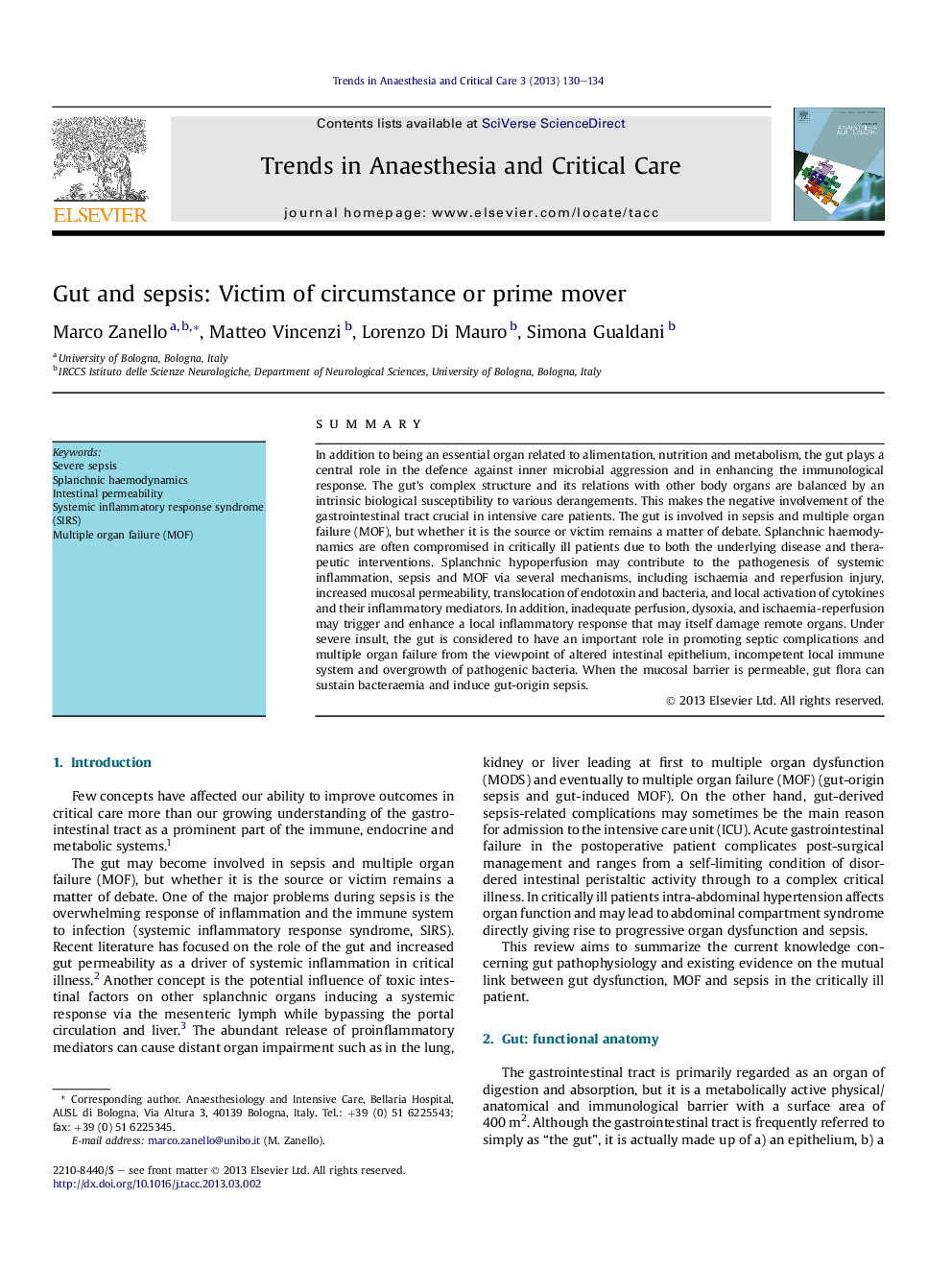| Article ID | Journal | Published Year | Pages | File Type |
|---|---|---|---|---|
| 2772797 | Trends in Anaesthesia and Critical Care | 2013 | 5 Pages |
SummaryIn addition to being an essential organ related to alimentation, nutrition and metabolism, the gut plays a central role in the defence against inner microbial aggression and in enhancing the immunological response. The gut's complex structure and its relations with other body organs are balanced by an intrinsic biological susceptibility to various derangements. This makes the negative involvement of the gastrointestinal tract crucial in intensive care patients. The gut is involved in sepsis and multiple organ failure (MOF), but whether it is the source or victim remains a matter of debate. Splanchnic haemodynamics are often compromised in critically ill patients due to both the underlying disease and therapeutic interventions. Splanchnic hypoperfusion may contribute to the pathogenesis of systemic inflammation, sepsis and MOF via several mechanisms, including ischaemia and reperfusion injury, increased mucosal permeability, translocation of endotoxin and bacteria, and local activation of cytokines and their inflammatory mediators. In addition, inadequate perfusion, dysoxia, and ischaemia-reperfusion may trigger and enhance a local inflammatory response that may itself damage remote organs. Under severe insult, the gut is considered to have an important role in promoting septic complications and multiple organ failure from the viewpoint of altered intestinal epithelium, incompetent local immune system and overgrowth of pathogenic bacteria. When the mucosal barrier is permeable, gut flora can sustain bacteraemia and induce gut-origin sepsis.
